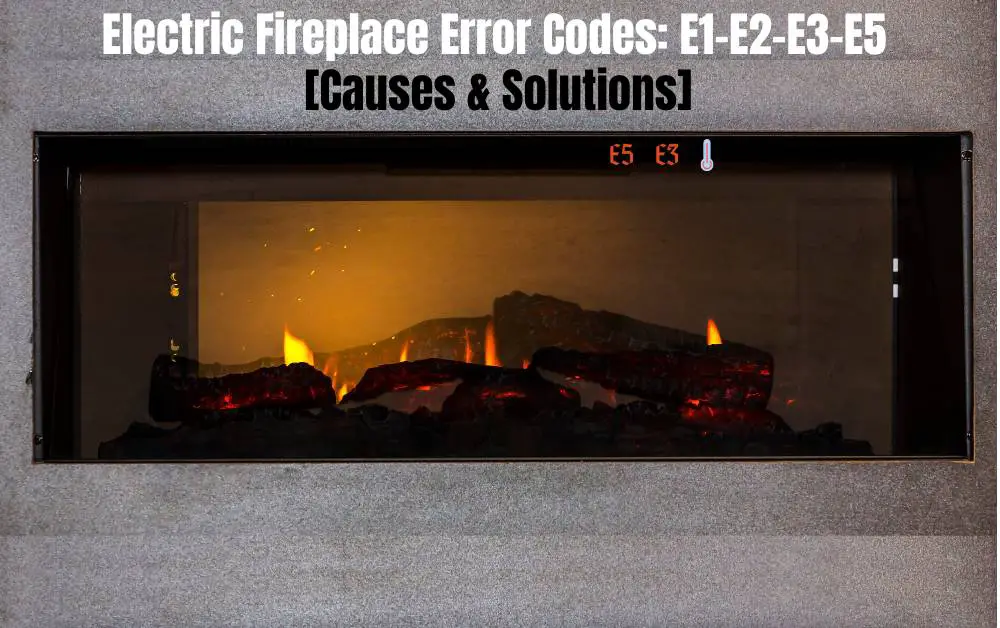As global attention turns toward reducing greenhouse gas emissions and promoting energy-efficient home heating solutions, electric fireplaces have emerged as a sustainable alternative to traditional wood-burning and gas fireplaces.
This case study explores the environmental impact of electric fireplaces compared to traditional systems, focusing on emissions, energy use, and real-world success stories of homeowners significantly reducing their carbon footprint through modern, high-efficiency electric fireplace installations.
Eco-Conscious Heating: Electric Fireplaces as Sustainable Alternatives
Home heating accounts for approximately 42% of residential energy use in the U.S. (U.S. Energy Information Administration, 2022). Traditional fireplaces, especially wood-burning ones, emit particulate matter (PM2.5), carbon monoxide (CO), volatile organic compounds (VOCs), and black carbon, contributing to both indoor air pollution and global warming.
Electric fireplaces, on the other hand, offer zero on-site emissions, making them an increasingly popular choice among environmentally conscious homeowners.
Emissions and Environmental Impact Comparison
| Feature | Wood Fireplace | Gas Fireplace | Electric Fireplace |
|---|---|---|---|
| CO₂ Emissions (lbs/hr) | 28–60 (EPA) | 5.6–11.7 (Natural Gas) | 0* |
| Particulate Matter (PM2.5) | High (Up to 28g/hr) | Moderate (0.3–0.5g/hr) | 0 |
| VOC Emissions | High | Moderate | 0 |
| Energy Efficiency | 15–30% | 70–85% | 99–100% (resistance) |
| Heat Output Control | Poor | Moderate | High |
| On-site Emissions | High | Medium | None |
*Note: Electric fireplaces produce no direct emissions. However, the environmental impact depends on how the electricity is generated (e.g., coal vs. renewables).
Sources: U.S. Environmental Protection Agency (EPA), U.S. Department of Energy (DOE), National Fire Protection Association (NFPA)
Energy Use and Cost Efficiency
- Electric Fireplaces: Use 1.5–1.8 kW per hour, translating to $0.15–$0.30 per hour (U.S. average electricity rate: $0.17/kWh).
- Gas Fireplaces: Use 20,000–40,000 BTUs per hour (~0.3–0.6 therms), costing $0.30–$0.60 per hour (average gas rate: $1.05/therm).
- Wood Fireplaces: Require regular wood refueling, costing $5–$15 per fire plus added chimney cleaning/maintenance.
Electric fireplaces are more cost-efficient in well-insulated rooms and ideal for zone heating, potentially reducing central heating usage.
Homeowner Case Studies: Real-World Environmental Impact
Case Study 1: The Carter Family – Portland, Oregon
Background: The Carters replaced an aging wood-burning fireplace with a high-efficiency electric model (Dimplex IgniteXL).
Impact:
- Estimated reduction of 1.2 metric tons of CO₂ per winter season
- Improved indoor air quality – measurable PM2.5 levels dropped by 75%
- Switched to 100% renewable energy provider (Portland General Electric Green Future program)
Quote:
“We wanted our kids to grow up breathing cleaner air inside our home, and this fireplace helped make that possible.” – Sarah Carter
Case Study 2: Michael H., Denver, Colorado
Background: Converted a gas fireplace to a wall-mounted electric fireplace in a 1,800 sq. ft. home.
Impact:
- Annual savings of $210 in gas bills
- Decreased reliance on fossil fuels – combined with rooftop solar panels
- Heat zoning allowed central HVAC to stay off 3–4 hours a day in winter
Result:
Michael cut household carbon emissions by 22% in the first year.
Case Study 3: Aria & James – Toronto, Canada
Background: Eco-conscious couple used a pellet stove but found the sourcing and ash maintenance challenging. Switched to an energy-efficient electric fireplace from Napoleon.
Impact:
- Zero local emissions
- 96% reduction in PM2.5 inside the home
- Integrated with smart thermostat for demand-based heating
Additional Step:
They enrolled in the Ontario Green Button electricity program, ensuring usage transparency and supporting grid efficiency.
Final Thoughts
Electric fireplaces, when powered by clean electricity, are arguably the most environmentally friendly supplemental heat source available today.
With zero on-site emissions, high energy efficiency, and ease of integration into smart home systems, they offer a scalable solution for eco-conscious homeowners seeking warmth without compromise.
Recommendations for Sustainable Heating
- Switch to Electric: Consider upgrading to ENERGY STAR-certified electric fireplaces.
- Use Renewable Energy Plans: Pair electric heating with green electricity for net-zero emissions.
- Adopt Zone Heating: Use electric fireplaces to heat commonly used rooms only.
- Smart Controls: Use timers and smart thermostats to reduce unnecessary usage.
- Insulation First: Always combine fireplace use with proper home insulation for maximum benefit.
You May Also Like To Read:
References
- U.S. Environmental Protection Agency (EPA): www.epa.gov
- U.S. Department of Energy: www.energy.gov
- Natural Resources Canada: www.nrcan.gc.ca
- National Fire Protection Association (NFPA)
- Portland General Electric: Green Future Program
- ENERGY STAR Product Directory
Affiliate Disclosure: Fireplaceadviser.com is a participant in the Amazon Services LLC Associates Program. We may earn a commission when you click on certain links on this site and purchase.

Hello!! I am Jamal Khan. I often fix my home electric heaters and gas stove problems and research the common issues in the heating units to improve my knowledge and expertise. The aim of establishing fireplaceadviser.com is to share my expertise and knowledge with my audience.












